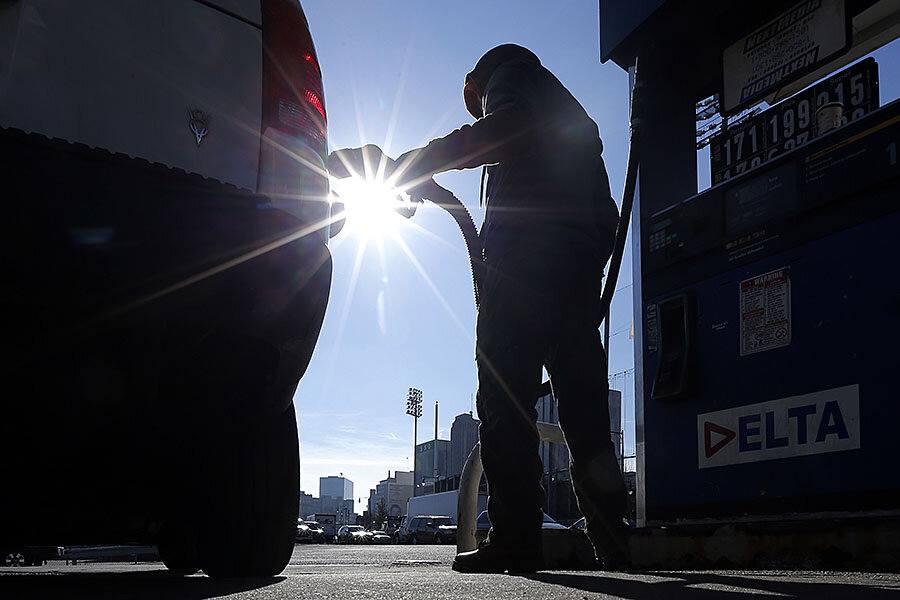Could oil prices fall again?
Loading...
Are oil prices heading for a double dip?
The surge in shale production has produced a temporary glut in supplies causing oil prices to experience a massive bust. After tanking to a low of $44 per barrel in January, falling rig counts and enormous reductions in exploration budgets have fueled speculation that the market will correct sometime later this year.
However, there is a possibility that the recent rise to $51 for WTI and $60 for Brent may only be temporary. In fact, several trends are conspiring to force prices down for a second time.
Drillers are consciously deciding to delay the completion of their wells, holding off in hopes that oil prices will rebound, according to E&E’s EnergyWire. The decision to put well completions on hold could provide a critical boost to the ultimate profitability of many projects. Higher oil prices in the months ahead will provide companies with more money for each barrel sold. But also, with the bulk of a given shale well’s lifetime production coming within the first year or two, it becomes all the more important to bring a well online when oil prices are favorable. With prices still depressed – WTI is hovering just above $50 per barrel – drillers are waiting for sunnier days. (Related: Here’s What Will Send Oil Prices Back Up Again)
Yet another reason to wait is the possibility that costs for well completions will decline. Oil and gas companies often contract out well completions to third parties, and those companies will face pressure to cut their fees in order to keep business. That works in favor of producers who put their projects on hold for the time being. Well completions can make up as much as three-quarters of the total project cost.
Several prominent shale drillers have confirmed they are undertaking such a wait-and-see strategy. EOG Resources, one of the biggest Texas shale drillers, announced its plans in late February to hold off on completions. Chesapeake Energy and Continental Resources have now followed suit.
"We're intentionally holding production back in 2015, because we believe it's the prudent thing to do," Doug Lawler, Chesapeake's CEO, said in a conference call. Chesapeake has said it may delay completing as many as 100 wells. EOG has 200 wells awaiting completion, a backlog that will intentionally rise to about 350 this year.
As the industry clears out that queue of wells awaiting completion, a rush of new supplies could come online, pushing WTI prices down once again. (Related: US Will Never Gain Oil Market Crown Says IEA Head)
Even with well completions being suspended, supplies continue to build. The latest EIA data shows that oil stocks in the United States climbed to 434 million barrels, the highest levels in storage in over 80 years. “My gut feeling is that the oil price could see a double bottom,” Jason Kenney, an analyst with Banco Santaander SA said in a Bloomberg interview. “We’ve got too much inventory.” Bloomberg noted that Kenney has a good track record of predicting price swings in the past. Even though rig counts have declined significantly, output has so far proved resilient.
Finally, there is some evidence that the ability to move excess oil into storage may run into trouble if production does not decline. Storage tanks are starting to fill, raising the possibility that a glut could worsen. There is a great deal of uncertaintyaround how quickly this might happen. The EIA sought to clarify, noting that the markets have confused some of its storage figures – some oil supplies in the EIA’s weekly inventory data is actually sitting in pipelines and at well sites, meaning there is more storage capacity available than many news outlets had originally thought. An EIA analyst recently told Bloomberg that overall storage capacity is only at about 60 percent, and “[w]e still have a way to go before we can consider ourselves to be full,” Rob Merriam, EIA’s head of petroleum statistics said. It would take a few months of strong inventory builds to fill up the remaining storage, perhaps an unlikely scenario, especially if production starts to take a hit. But if storage tanks did start to fill up, prices would dive once again and companies would have to shut in wells and cut back on production.
Rig counts are at six year lows, forcing oil prices up on speculation that supply reductions will soon relieve the oil glut. But a double dip cannot be ruled out.
More Top Reads From Oilprice.com:
- OPEC’s Strategy Is Working Claims Saudi Oil Minister
- Oil Price Crash: Top 5 At-Risk Countries
- Will US Shale Boom Continue Or Have A Hiatus?
Source: http://oilprice.com/Energy/Oil-Prices/Could-Oil-Prices-Plummet-A-Second-Time.html







